Mental Health & Native Americans
Native Americans are one of the most impacted minority groups in terms of mental health issues. According to Mental Health America, 19% of America’s indigenous community reported suffering from mental illness in the past year.
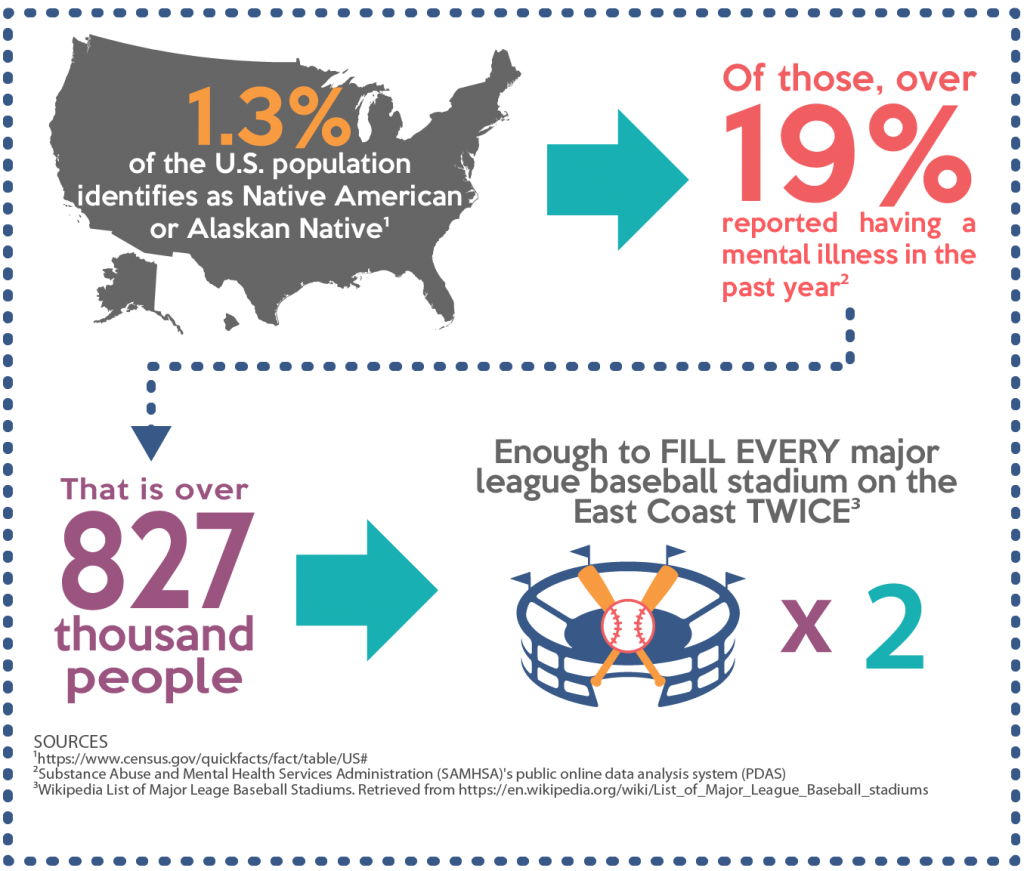
These issues are affected by both historical trauma and modern inequalities, and there is a severe lack of access to health care for indigenous communities. The shared traumatic history of American Indians and Alaska Natives is believed to be a primary factor in the high rate of psychological distress of these populations, almost 2.5 times the rate at which the same levels of distress are observed in non-native populations.
Indigenous Americans often suffer from issues of identity, which are compounded by the fact that they are in many ways cut off from their cultural heritage while simultaneously being forcibly othered from the rest of America through historical segregationist policies and racism.
Cultural Objects and Understanding Identity
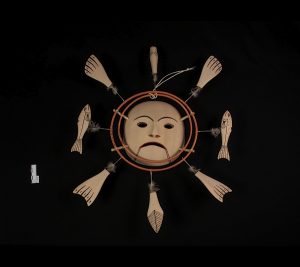
The concept of identity for Native Americans manifests itself in different ways from other cultural groups. Traditions and stories are an important part of the identity of any Native American, and objects and symbols are often representative of core ideals and beliefs that have been maintained for generations.
For example, masks are symbolic of persona, and for many Native American tribes ceremonial masks are directly representative of the spirit or identity they depict, similar to how the eucharist is theologically considered the literal body of christ. This Yup’ik mask in the collections of the Museum of Natural and Cultural History at the University of Oregon represents a humanoid face as part of a sculpture of a seal or turtle, incorporating a number of symbolic elements that would tell a story to the viewer.
Art and Cultural Expression
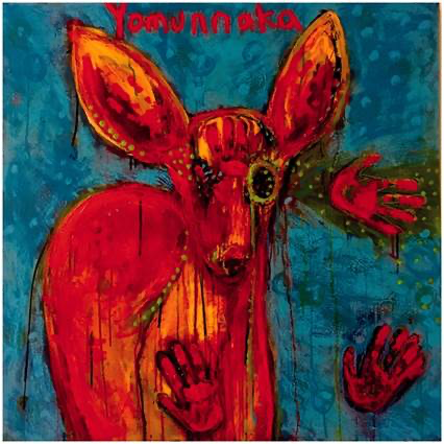
This interest in culture symbolism and representative identity also extends to indigenous artists today. This piece, entitled Yomunnaka Choyyekke, or Beautiful Deer in english, was created by artist Michelle Napoli to honor indigenous beauty and acknowledge that Native Americans still exist.
Trauma and Traditional Stories
Another Native artist, Rick Bartow, spent his career fighting the mainstream preconceptions of ‘Native American art’ while staying true to his roots as an indigenous person. His piece, Creation of Crow, tells a story important to his culture in a style reminiscent of contemporary masters like Jean-Michel Basquiat or Marc Chagall.
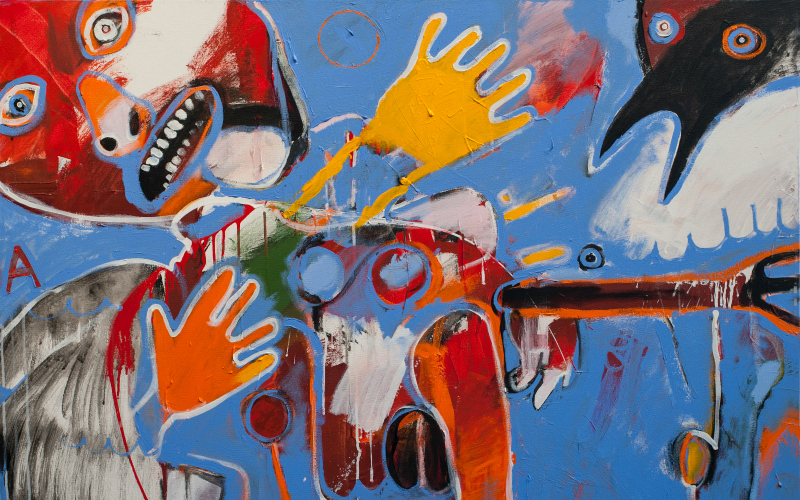
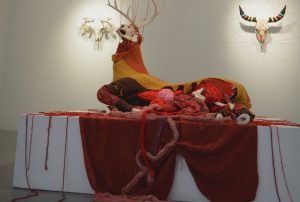
Romantic Expressionism
Indigenous ways of life are deeply rooted in life and death, a cycle that holds great importance. Despite the grisly nature of this knitted art piece, it serves as an expression of the artist’s culture while its creation was a deeply meditative process.
Cannupahanska Luger, the artist who created this sculpture, grew up on a reservation in North Dakota. While he primarily works in ceramics, Luger describes his crocheted piece resembling a disemboweled elk, “a commentary on nostalgia and the romanticizing of native cultures.”
Moving Forward
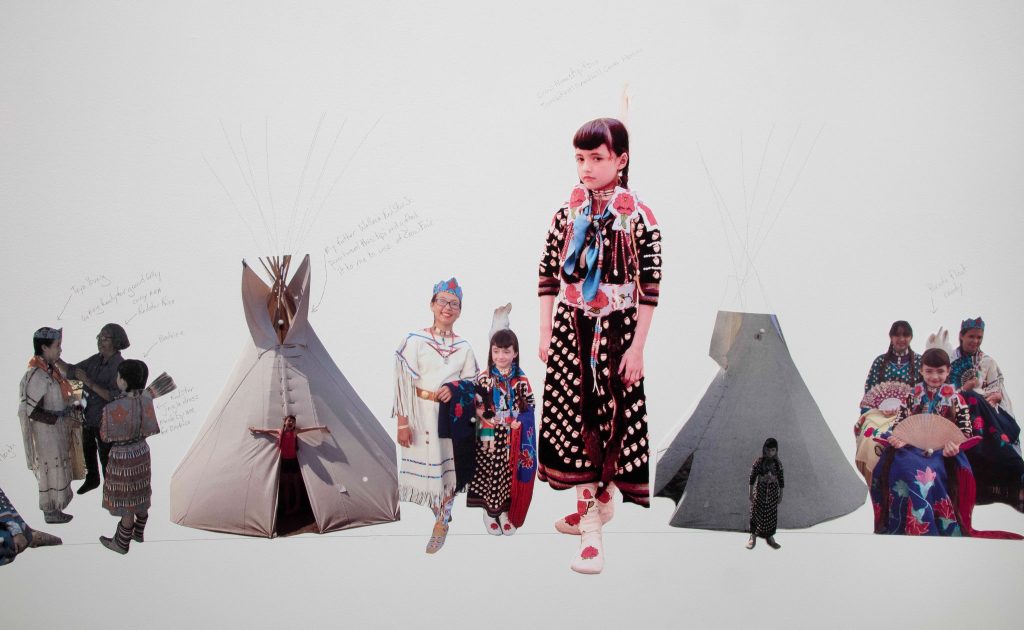
Artists such as Wendy Red Star examine deeply the themes of cultural derealization and the widespread lost of identity that many Native Americans suffer from. Her exhibition, “Wendy Red Star: A Scratch on the Earth,” was the first show at the Newark Museum dedicated to a Native American artist, and she made great use of the space to emphasize that the modern lives of Native people and the traditional ways are not necessarily mutually exclusive. A portion of one of her works, a 130-foot-long timeline annotated by the artist, is shown below.
In order to combat mental health issues for the indigenous community, there needs to be a greater understanding of the underlying causes, rather than just paltry attempts to alleviate the symptoms. By looking to the work of indigenous artists, and learning about the struggles that Native people live through, improvements can be made to the way mental health issues are treated for this community, which is so disproportionately impacted by it.
Resources
Mental Health America – https://www.mhanational.org/issues/native-and-indigenous-communities-and-mental-health
National Alliance on Mental Health – https://nami.org/Your-Journey/Identity-and-Cultural-Dimensions/Indigenous
National Indian Health Board – https://www.nihb.org/behavioral_health/resources.php
